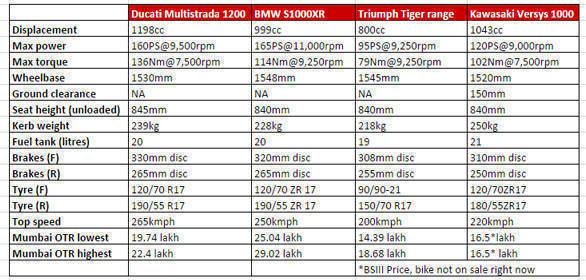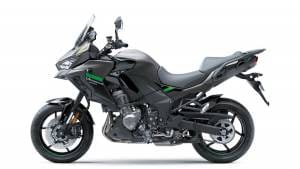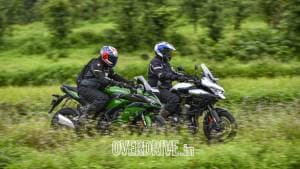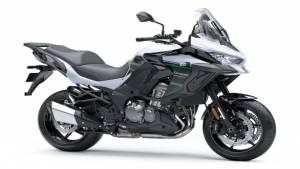Spec comparison: BMW S 1000 XR vs Kawasaki Versys 1000 vs Suzuki V-Strom 1000 vs Triumph Tiger vs Ducati Multistrada 1200
The adventure tourer, or adv as they're increasingly being called instead, is a very hot and happening motorcycle category and not just in India. There are some stellar motorcycles in this class globally, and we know from our Adventure Tourer feature that these motorcycles make a lot of sense for India and our peculiar brand of chaos. The Ducati Multistrada sits at the head of the segment in terms of price and technology while the excellent Tiger 800 range more or less makes up the heart of this segment. And now BMW Motorrad enters the fray with their highly acclaimed S 1000 XR which is priced rather well compared to BMW's earlier prices. Two models are on sale. The base S 1000 XR is priced at Rs 18.5 lakh and the all-singing, all-dancing S 1000 XR Pro is priced at Rs 21.5 lakh, ex-showroom Delhi. Ready for a spec battle? Let us dive in.
Kawasaki Versys 1000
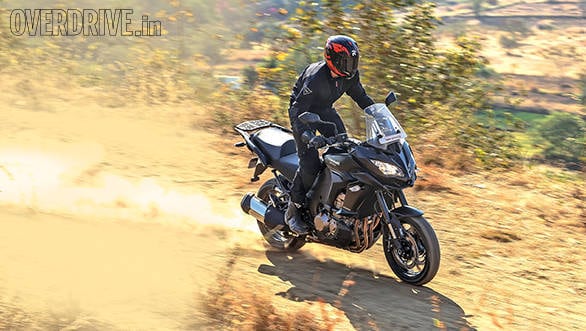
Let us start with the Kawasaki Versys 1000 which sells relatively small numbers but happens to be a deeply impressive adventure tourer. In this company, though, it is perhaps the most road-focussed of all. And it isn't just the 17-inch wheels. The way it moves and the things it excels at are all about how it performs on the road. The engine is the star of the show and we are glad the Versys 1000 gets traction control. The Versys does have issues though. It is among the oldest models here as well as amongst the heavier. In any case, the Euro-IV Versys 1000 is not currently available in India, which means you will not be able to buy a Kawasaki Versys 1000 immediately, so let's move on.
Suzuki V-Strom 1000
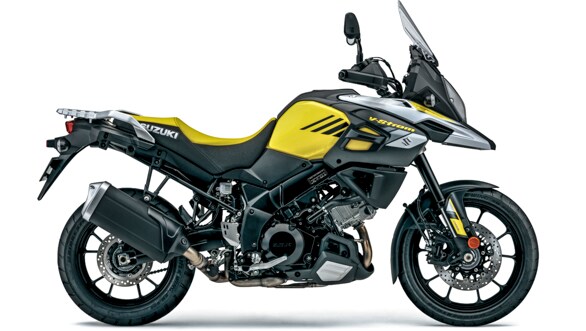
Unfortunately, it is the much the same story with the Suzuki V-Strom 1000 as well. The motorcycle is currently caught between the BS-III model not being on sale, and the Euro-IV/BS-IV 2017 model not being launched yet. Suzuki had significantly updated the V-Strom - see our report from the Intermot 2016 show - and we wait to see when it will be launched in India and what the price increment turns out to be. Expect the motorcycle to be here before September - our guess - but Suzuki is currently focussed on their new GSX-R1000 and not talking about the 2017 V-Strom 1000.
Triumph Tiger
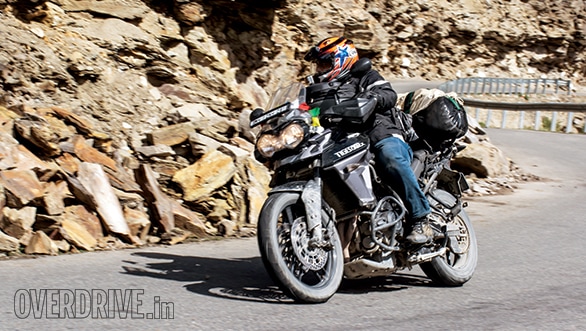
That brings us to the motorcycle that sells the most in terms of adventure tourers in India, the Tiger 800. Again, the 1,200cc version, the Tiger Explorer is not currently on sale, pending the arrival of the 2017 model that meets the BS-IV norms. Before the year is out though, the new Explorer should be here - we are given to understand.
The Tiger 800 range begins with the base XR, priced at Rs 14.39 lakh, on-road Mumbai, and the top model is the fully loaded Rs 18.68 lakh Tiger XCA. The Triumph range offers a good spread between the XR and XRx models with their 17-inch alloy wheels and feel more road-biased as do most of the other adventure tourers today. The XC and the XCA models get 19-inch front wheels, spoked rims and the promise of significant off-road ability. The Triumph Tigers make a lot of sense as buyable, own-able motorcycles. They're fairly reliable. The performance isn't at the top of the spectrum here but then again, these are the smallest engines in the table and they're far, far from being slow. Most importantly, the Tiger is well-established as an India-ready, relatively pocket-friendly adv.
In fact, as calm as the Tiger's territory is, we have just got words that the Ducati Multistrada 950 is arriving this August with a price - Rs 15.12 lakh on-road Mumbai - that sets an, er, eagle among the predatory felines as it were. But that's a story for later.
And now it is time for the bigger battle. The Ducati Multistrada and the BMW S 1000 XR.
Multi' vs XR

The BMW S 1000 XR has the smaller engine, 999cc, but it has more cylinders and it uses the S 1000 R-based engine to produce 160PS, the same peak power as the Multistrada 1200. The V-twin's advantage is in torque, and the Ducati's 136Nm does compare rather well against the 112Nm of the BMW. A nuance here is that the BMW's inline-4 needs more revs, and the V-twin produces power and torque lower. In fact, the BMW's peak torque point is just 250rpm before the Ducati hits peak power. But before you think the Ducati's ahead, the BMW happens to be a substantial 11kg lighter. All told, we would expect this to be a fierce, closely matched battle, and the results when we compare the two directly will be epic.
Until you compare the prices that is. You see, while BMW lowered the prices substantially compared to the old importer-era prices, the Germans have to import these bikes as CBUs - expensive. Ducati circumvents this by sourcing the Multistrada and others from its Thailand plant, a country with which India happens to have a free trade agreement that brings substantial duty cuts.
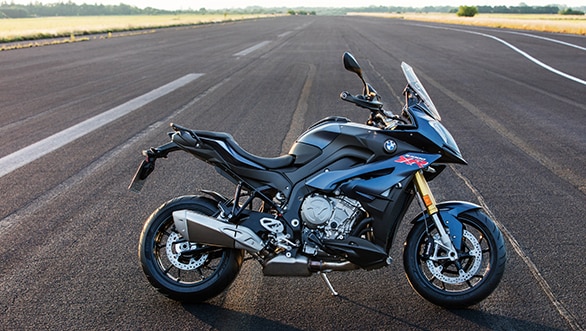
As a result, while the Ducati and the BMW are priced at par in nearly all the markets, this is not the case in India. The (relatively) non-electronic versions, the base Ducati Multistrada 1200 and the BMW S 1000 XR Standard are separated by a substantial Rs 5.3 lakh. The BMW is roughly 20 per cent more expensive than the Ducati. And the fully electronicky Multistrada 1200 S is a whopping Rs 6.6 lakh less than the S 1000 XR Pro. And while both have long equipment lists which include electronic suspension control, the BMW also adds a quick shifter while the Multistrada still doesn't have an OE one at all.
In fact, the BMW S 1000 XR Pro is even more expensive than the flagship Multistrada, the Pikes Peak, which has suspension for Ohlins as well as a nearly all carbon-fibre bodywork. It does look like the BMW S 1000 XR is expensive compared to the Ducati Multistrada, but that's only as far as the spec sheets can lead us. Now we wait for a no holds-barred contest that will truly tell us how they stand in the real world. Stay tuned to OVERDRIVE for that.
And now, it is your turn. If you were in the market for a big adventure tourer which of these would you buy and why?
